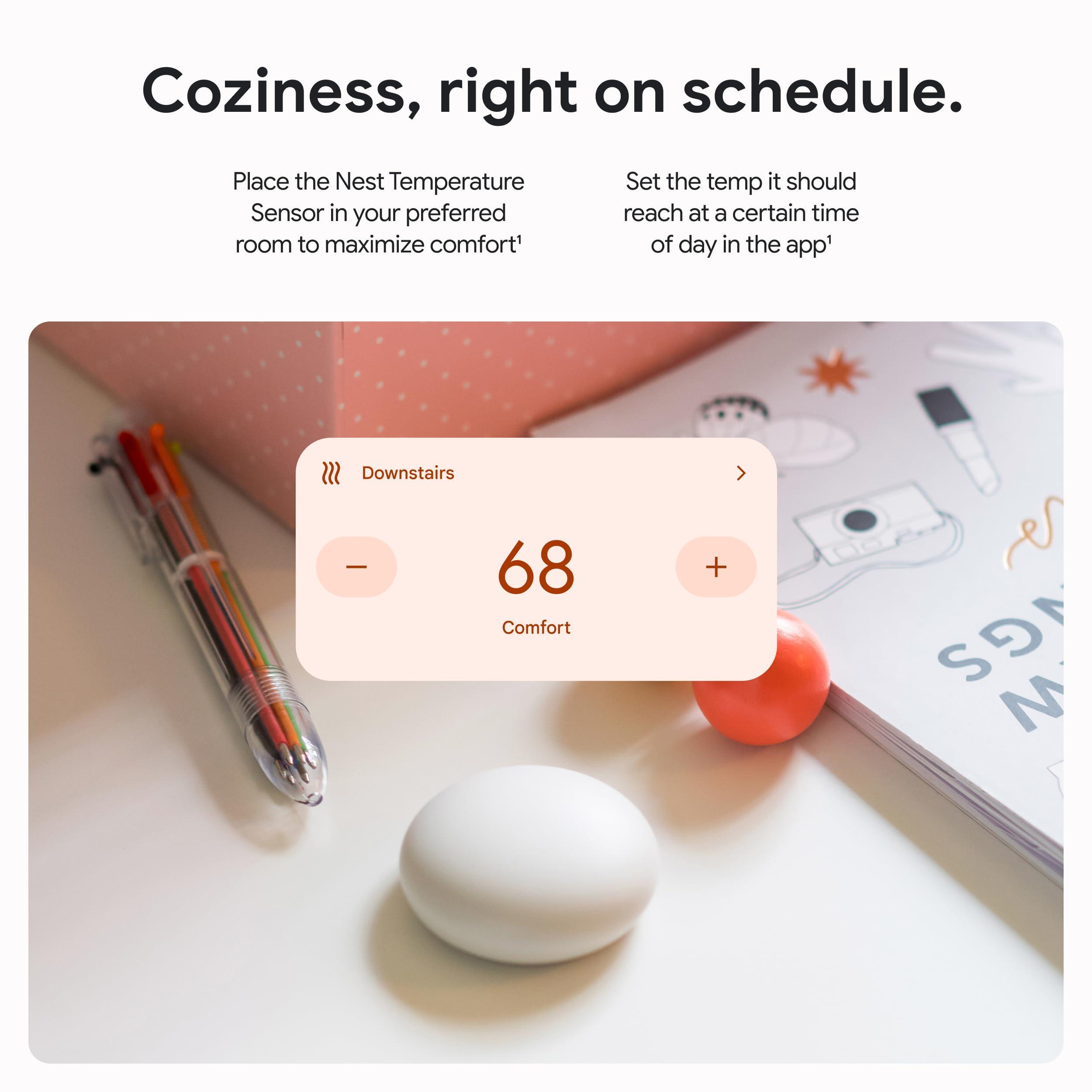In an era where smart technology seamlessly integrates with our daily lives, achieving the perfect balance of comfort at home has become more attainable than ever. Among the innovative offerings in this realm is the Google Nest Temperature Sensor, a remarkable device designed to enhance your home’s climate control. Imagine a world where every room harmoniously adapts to your preferred temperature, ensuring that no corner of your living space is left feeling too hot or too cold. This article delves into the transformative capabilities of the Nest Temperature Sensor, exploring how it works, its benefits, and how it can effortlessly optimize comfort in every room of your home. Join us as we uncover the features that make this device a must-have for those seeking an ideal living environment, all while maintaining an effortless blend of technology and comfort.
Understanding the Functionality of Google Nest Temperature Sensors
The Google Nest Temperature Sensors are innovative devices designed to enhance the efficiency of your home’s heating and cooling system. By placing these small sensors in various rooms, you can accurately monitor and control the temperature in each space, ensuring that every corner of your home reaches optimal comfort levels. These sensors communicate seamlessly with your Nest Learning Thermostat, allowing for precise adjustments based on the specific temperature needs of different rooms. This means you can enjoy a consistent and comfortable environment, tailored to your preferences, no matter where you are in your home.
Utilizing the functionality of these sensors can significantly reduce energy costs while maximizing comfort. Some key features include:
- Room-Specific Control: Adjust temperatures room by room rather than relying on a single point of measurement.
- Temperature Alerts: Receive notifications when the temperature drops or rises beyond your set limits.
- Easier Scheduling: Create unique heating and cooling schedules based on individual room preferences.
When combined with the capabilities of the Nest Learning Thermostat, you’ll find that the potential for energy savings and home comfort is greater than ever before. The integration allows for automatic adjustments based on the average readings from all sensors, ensuring an efficient climate throughout your living space.

Strategic Placement for Maximum Effectiveness
To fully harness the benefits of your Google Nest Temperature Sensor, understanding the optimal positioning within your space is crucial. Consider placing the sensors in areas that are most representative of your daily routines and potential temperature fluctuation factors. Ideal locations might include:
- Living Room: Central area where you spend significant time.
- Bedrooms: Places where personalized comfort is essential for restful sleep.
- Home Office: Areas where productivity hinges on a comfortable environment.
- Kid’s Rooms: To ensure optimal comfort and air quality for children during play or rest.
It’s also advisable to avoid placing your sensors in direct sunlight or drafts, as this could skew temperature readings and diminish their effectiveness. A well-planned layout can enhance the performance of your smart home system significantly. For instance, consider a layout that includes multiple sensors across different zones. Here’s a simple table illustrating a possible placement strategy:
| Room | Recommended Placement |
|---|---|
| Living Room | Near seating areas, away from windows |
| Bedroom | On a wall opposite the window |
| Kitchen | Near cooking appliances but not too close |
| Bathroom | Well-ventilated area, away from humidity sources |

Integrating with Smart Home Systems for Enhanced Comfort
Imagine a home where every room is always at the perfect temperature, tailored to your unique preferences. With the Google Nest Temperature Sensor, achieving this level of comfort is not just a dream but a reality. By integrating seamlessly with your existing smart home ecosystem, the sensor enables precise temperature monitoring and adjustment. This way, you can ensure that each room feels just right, reducing energy costs and enhancing comfort. To make the most out of your Google Nest system, consider the following:
- Room-Specific Settings: Customize temperature settings for each room according to its usage.
- Smart Alerts: Receive notifications if temperatures drop or rise unexpectedly.
- Compatibility: Works with a wide range of smart home devices for cohesive control.
One of the key advantages of integrating the Nest Temperature Sensor is its ability to work alongside other smart devices, creating a unified environment that adapts to your daily routine. For instance, when you leave home, the sensor can communicate with your thermostat to lower heating or cooling, which saves energy without sacrificing comfort when you’re back. Leveraging the power of automation can optimize your heating and cooling habits effectively. Here’s a quick overview of how the sensor can support your lifestyle:
| Feature | Benefit |
|---|---|
| Remote Access | Control your home’s temperature from anywhere via the app. |
| Energy Savings | Lower utility bills by preventing unnecessary heating/cooling. |
| Multi-Room Support | Ensure comfort in every part of your home, no matter the size. |

Customizing Temperature Settings to Suit Individual Preferences
With the Google Nest Temperature Sensor, personalizing your indoor climate has never been easier. Whether you prefer a cozy warm nook or a refreshingly cool workspace, this device allows you to set specific temperature zones in your home, ensuring that every room meets your unique comfort requirements. By placing sensors strategically, you can achieve optimal heating or cooling tailored to the activities that occur in each space. Here are some tips for effectively customizing your temperature settings:
- Identify high-usage areas: Consider which rooms are frequently occupied and prioritize them when setting boundaries.
- Adjust for time of day: Program different settings based on your daily schedule to save energy while still enjoying comfort.
- Communicate preferences: If you share your home, involve others in the setup process to accommodate everyone’s needs.
To illustrate the impact of these personalized settings, here’s a simple comparison of potential rooms and their desired temperatures:
| Room | Preferred Temperature (°F) |
|---|---|
| Living Room | 72 |
| Bedroom | 68 |
| Office | 70 |
| Kitchen | 74 |
By utilizing the Google Nest Temperature Sensor in a thoughtful approach, you can not only enhance your comfort but also foster a more energy-efficient home. Experimenting with various configurations will help you discover the ideal environment for every family member and any occasion.
The Conclusion
In conclusion, the Google Nest Temperature Sensor emerges as a pivotal player in the quest for home comfort, effortlessly blending technology with convenience. By equipping each room with tailored temperature control, it empowers users to create a harmonious living environment suited to their preferences. Whether you’re seeking to enjoy a cozy winter evening or a refreshing summer day, this innovative device ensures every corner of your home feels just right. As smart home technology continues to evolve, the Nest Temperature Sensor stands out as a simple yet effective solution for optimizing comfort and enhancing your daily life. So, why not embrace this smart innovation and transform your home into a sanctuary of temperature perfection? After all, comfort awaits in every room!
